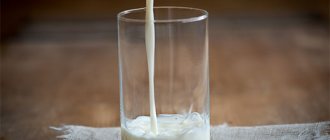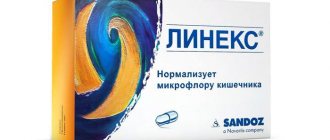Rotovirus diarrhea is a symptom of a viral disease, rotavirus gastroenteritis, most often found in children aged 6-24 months. The disease occurs in about 95% of children under 5 years of age. The infection is highly contagious and usually recurs after treatment. Patients with rotavirus gastroenteritis have repeated vomiting, abdominal pain, and diarrhea. The length of time the disease lasts depends on the strength of the immune system. Typically, problems last 2-7 days.
Rotavirus primarily affects the pediatric population. The younger the patient, the more dangerous the virus, which can cause serious health problems. In adults or older children, the dramatic course of rotavirus infection is rare. An older person builds immunity against the virus over a long period of time. Severe infection in adulthood is typical only for a person with a weakened body. According to experts, this is also due to the difference between the pH of stomach acid in adults and children.
What is rotavirus?
Rotavirus infection is a disease that is transmitted to a patient in various ways and can be provoked by rotaviruses.
The symptoms of their influence are expressed in signs of moderate enteritis (gastroenteritis), while there is a pronounced combination with intestinal and respiratory syndromes at the initial stage of development of the disease state. People of all ages are susceptible to rotavirus infection, but children aged six months to two years are most often affected. Typically, an infection transmitted by rotaviruses is defined as gastroenetritis, stomach or intestinal flu, or rotavirosis. The virus is mainly transmitted through ingested food; it can enter the human body from unwashed vegetables, fruits or other foods.
In some cases, rotaviruses are stored in the refrigerator for a long time, and chlorinated water has no effect on them.
First aid
There is no medicine that would destroy rotavirus infection. Therapy is symptomatic, eliminates the main symptoms, improves well-being, restores the activity of the gastrointestinal tract:
- During the first few days, normalization of the water-salt balance is required. With diarrhea, a large amount of fluid is lost, the intestinal walls will not absorb it, and dehydration may occur. Intake of water is a prerequisite for recovery. The child should be given food in small portions (no more than 50 ml at a time) so as not to lead to vomiting. Boiled water is suitable. And for older children, the Regidron solution is suitable.
- In newborns and infants, dehydration occurs quickly. It leads to serious consequences. If the illness occurs before one year, you should call a doctor.
- You should not force your child to eat food. During recovery, you should eat as much as you want, but in small portions. At the first signs of illness, dairy products are excluded from the menu.
- Whatever the age of the patient, you should call a doctor. The symptoms of rotavirus are similar to salmonellosis and cholera. The pediatrician will make an accurate diagnosis.
Timely assistance will help prevent complications. After a short time, you can notice an improvement in the child's condition. Better yet, take your baby to the doctor.
Causes
The most common causes of rotavirus infection are:
- Eating dirty or poorly washed fruits and vegetables.
- Dirty water taken for drinking, as well as raw water.
- Ingestion of food products that have undergone poor heat treatment, as well as undercooked or undercooked foods.
- Failure of the sick person to comply with the rules of hygiene procedures.
- Swimming in highly polluted waters.
As a rule, one reason is enough for rotaviruses to enter the patient’s body. In some cases, a combination of several types of infectious lesions is possible, due to the combination of several different causes.
How long is a person considered infectious?
The contagious period begins from the appearance of the first signs of the disease and lasts until recovery. All this time, the sick person continues to release viral particles.
You can become infected with rotavirus anywhere. As a rule, this occurs in crowded places: in kindergartens, schools, offices, public transport, etc. The disease can manifest itself in isolated cases or epidemic outbreaks, most often occurring in the cold season.
Symptoms of rotavirus infection
According to the observation of doctors, there may be several different types or stages of development of an infectious lesion. The symptoms of the disease are different each time. Basically, the symptoms of rotavirus infection are limited to a limited range of symptoms.
In the initial stage of the disease, the patient experiences respiratory symptoms. At the very beginning, rhinitis occurs, the patient’s nose becomes suddenly stuffy, and severe headaches begin that take on chronic forms. The throat turns red and begins to tingle, conjunctivitis and sputum may occur. Often at such stages the body temperature rises significantly.
The second stage of the disease is characterized by pronounced symptoms of the development of inflammation in the stomach and intestines. The development of the process takes from three to five days. The symptoms of this process are as follows:
- Diarrhea begins, which can be either dark brown or yellowish-gray in color. At the very beginning of the disease, the stool is yellowish and smells very bad. Stool discharge occurs from one to ten times a day.
- A typical sign of the development of an inflammatory process in the gastrointestinal tract is vomiting. Very often it occurs immediately after finishing a meal and occurs with the release of mucus and undigested food fragments.
- Pain sensations develop in the abdomen, accompanied by colic. Such sensations are eliminated through the use of antispasmodics.
- There is a strong increase in temperature, often reaching critical levels. After using medications that relieve fever, as a rule, the temperature drops sharply.
- Severe drowsiness occurs and appetite decreases significantly. Such symptoms are the initial manifestations of intoxication of the body.
At the third stage of disease development, intoxication itself takes place. The sick person becomes lethargic and quickly gets tired. Often loses appetite and gets tired quickly. Children in such situations become restless, sleep poorly, and in especially severe cases may lose consciousness.
Symptoms may last one to two weeks. If the patient's immune system is severely weakened, symptoms of the disease may develop over the course of one month or even longer.
Symptoms
You can tell that diarrhea is caused by rotavirus based on certain symptoms. For example, food poisoning, unlike this disease, develops rapidly, and similar signs of the disease appear in all people who have eaten the same food.
Symptoms of rotavirus infection are generally similar to the flu. There is a certain pattern of disease development:
- Incubation period . On average it ranges from 15 hours to 6 days.
- Initial . At this stage of the disease, the throat becomes inflamed, a wet cough, and conjunctivitis are possible.
- Spicy . Lasts about five days. The most striking sign of rotavirus infection in children is vomiting and diarrhea. The baby becomes lethargic, capricious, and loses his appetite. Loose stools after the onset of rotavirus are watery, foamy, and have a repulsive odor. There may be mucus in the stool. With a mild course of the disease, the stool takes on a mushy consistency. Often, diarrhea caused by rotavirus infection is accompanied by painful, pulling sensations in the stomach, and loud rumbling.
- Intoxication . It usually starts on the third to fifth day. In this case, impotence, weakness, drowsiness and other signs of poisoning are observed.
- Recovery . Lasts one or two days.
Questions about rotavirus infection and diarrhea
Diarrhea almost always accompanies rotavirus infections. You should clearly understand the main distinguishing features of this condition and the possibilities of eliminating it.
Can rotavirus infection occur without diarrhea?
Rotavirus infection almost always occurs against the background of copious liquid stools. However, in some cases it can occur without diarrhea.
Clinical manifestations in such cases may be blurred; the most pronounced manifestations that characterize a real infection are not present. Most often, this is observed in adult patients. The carrier of the virus is not aware of its presence in the body, but at the same time it can already serve as a source of danger to others. As a rule, this applies to workers in the catering sector, food units, and large-scale enterprises.
Often in such cases, diarrhea due to rotavirus infection is not observed. Manifestations of an infectious lesion are as follows:
- the patient begins to feel general weakness and malaise;
- there is a feeling of acute nausea;
- the temperature rises sharply;
- there is a feeling of severe weakness, general fatigue increases, the person becomes lethargic;
- Appetite decreases significantly and vomiting may begin.
The disease can also develop secretly, while the small intestine is involved in the process at the very last moment, and the infection develops for a long time without affecting it.
How many days does diarrhea with rotavirus last?
It all depends on the age of the patient and the stage of development of his disease. On average, loose stools caused by rotavirus can last from one day to one week. In most cases, diarrhea does not prolong for long periods, but in medical practice there are cases of very prolonged diarrhea (up to two weeks or even up to a month). This happens with advanced diseases, when medical care was not provided to the victim in a timely manner.
What color is the chair?
The color of a patient's stool is determined by the degree of the disease and the patient's age. In children affected by rotavirus infection, the stool is most often liquid, foamy, and watery in consistency. In some cases, mucous impurities are observed in children's poop. Its color varies from light to dark brown, with a yellowish tint. In an adult, stool is most often yellowish to brown in color; white color is also possible in the initial stages of the development of the disease. In some cases, the stool may have a reddish tint if there are inclusions of blood cells in it.
How long does diarrhea last due to rotavirus in a child?
Rotavirus infection or “intestinal flu” is caused by a pathogen of the genus of viruses from the Rotavirus family and is characterized by signs of general intoxication. The patient experiences an increase in body temperature, diarrhea, episodes of vomiting, weakness, and fatigue. How long diarrhea due to rotavirus in a child can last depends on the state of the baby’s immune system and the strain of the pathogen.
Causes
The risk group includes persons of any gender and any age category. But most often, rotavirus infection, which causes diarrhea, affects young children under 2 years of age. In adult patients, the disorder occurs as a result of contact with a sick child. There are not very many possible causes of the disease, but they all lead to nausea, vomiting, and diarrhea.
Factors that provoke infection include:
- Consuming dirty foods or raw/contaminated water.
- Eating food prepared in violation of heat treatment rules.
- Lack of hygiene.
- Contact with a sick person.
You can get infected anywhere. The main routes of transmission are fecal-oral. Rotavirus survives at low temperatures and retains the ability to be active and reproduce even after prolonged exposure to the refrigerator. It is also possible that the body may be damaged by airborne droplets. When you sneeze, droplets of mucus enter the air and people susceptible to the disease become infected.
Symptoms
You can tell that diarrhea is caused by rotavirus based on certain symptoms. For example, food poisoning, unlike this disease, develops rapidly, and similar signs of the disease appear in all people who have eaten the same food.
Symptoms of rotavirus infection are generally similar to the flu. There is a certain pattern of disease development:
- Incubation period . On average it ranges from 15 hours to 6 days.
- Initial . At this stage of the disease, the throat becomes inflamed, a wet cough, and conjunctivitis are possible.
- Spicy . Lasts about five days. The most striking sign of rotavirus infection in children is vomiting and diarrhea. The baby becomes lethargic, capricious, and loses his appetite. Loose stools after the onset of rotavirus are watery, foamy, and have a repulsive odor. There may be mucus in the stool. With a mild course of the disease, the stool takes on a mushy consistency. Often, diarrhea caused by rotavirus infection is accompanied by painful, pulling sensations in the stomach, and loud rumbling.
- Intoxication . It usually starts on the third to fifth day. In this case, impotence, weakness, drowsiness and other signs of poisoning are observed.
- Recovery . Lasts one or two days.
Rotavirus is a seasonal disease and, in addition to an eating disorder, is accompanied by respiratory symptoms. Stool and urine change color (urine becomes dark, sometimes with blood, and stool becomes grayish-yellow).
How long diarrhea that begins with an intestinal infection will last will depend on the age category of the patient and the general condition of the body.
If medical attention is not provided, diarrhea syndrome can last a month.
Important! Repeated loose stools can lead to dehydration (dehydration), which is very dangerous for children.
Diagnostics
Worsening of the condition may be associated with other infections, which can cause diarrhea and vomiting. Therefore, to accurately diagnose the disease, the symptoms that appear are not enough. To know how to stop diarrhea, you first need to undergo a series of tests:
- Stool microscopy to determine the presence of the virus.
- Serological testing of blood serum, identifying specific antibodies.
Within a few hours the result comes, allowing you to prescribe adequate treatment. You can purchase a special test for your home first aid kit and perform it if alarming symptoms appear. But the final diagnosis must be made by a doctor, especially when it comes to young patients. He will tell you what to give your child for diarrhea due to rotavirus.
Therapeutic measures
It should be noted that there are no special drugs for the treatment of rotavirus. Therapy must be comprehensive. Diarrhea due to rotavirus is dangerous because it can cause dehydration, so it must be eliminated as soon as possible. The second unpleasant aspect of the disorder is general intoxication, which must be combated simultaneously with diarrhea syndrome.
Experts prescribe:
- Enterosorbents , absorbing toxic substances produced by rotavirus infection. They not only cleanse the body, but also restore damaged mucous membranes and prevent viral cells from attaching to the intestinal walls.
- Enzymes that restore the functioning of the digestive system.
- Antimicrobial agents in the presence of blood in the stool, which means the addition of bacteria, as the body becomes more vulnerable.
- Electrolytes that stabilize water-salt balance. To prevent dehydration, you need to drink constantly, especially when diarrhea, which is provoked by rotavirus, lasts for a long time. In the first days, the child should be given water or saline solutions, for example, Regidron. It is diluted in a liter of water and drunk in small sips so as not to vomit too much. Also, when treating diarrhea, you can use the following remedy: 2 tablespoons of granulated sugar, 1 tablespoon of baking soda, 1 teaspoon of table salt, grapefruit juice mixed and dissolved in a liter of water. Take 2-3 sips every half hour. Infants can be given water from a small spoon or from a syringe.
- Antipyretics . If a high temperature appears with diarrhea due to rotavirus infection, then in such cases give Ibuprofen, Nurofen.
- Antidiarrheal medications that stop diarrhea in a child after rotavirus, for example, Loperamide, Imodium.
The baby may be admitted to a hospital where medications are administered intravenously when diarrhea due to rotavirus does not go away for too long. The patient is prescribed:
- Symbiotics - they allow you to establish intestinal microflora in the shortest possible time.
- Antiviral drugs are drugs that shorten the duration of the disease.
Folk recipes
To make diarrhea go away faster after rotavirus infection, you can use traditional medicine. For this, healing decoctions and infusions are prepared:
- A drink made from chamomile flowers and mint leaves. The raw materials are steamed with boiling water and left for half an hour.
- The fruits of blackberries, bird cherry and blueberries are poured with boiling water, infused and given to the child to drink throughout the day.
- Pour a teaspoon of St. John's wort into a glass of boiling water and wait 1-2 hours. Give the patient 100 ml before meals.
If a child has rotavirus and diarrhea, the stomach should not be washed. During this manipulation, the beneficial intestinal microflora is washed away. Doctors recommend resorting to a cleansing procedure in case of persistent vomiting.
Diet
Rotavirus can be weakened by changing your diet. Need to exclude:
- Dairy drinks.
- Plant food.
- Floury, sweet.
- Salted, fried.
- Fatty broths.
Nutrition should be easily digestible. It is better for nursing mothers not to stop breastfeeding during this period (unless the doctor recommends a temporary interruption of breastfeeding to stabilize the baby's condition).
Prevention
Preventing infection is not difficult. To do this, you need to maintain personal hygiene and teach your baby this. Eat dairy products after heat treatment, pour boiling water over vegetables and fruits, drink exclusively filtered or boiled water.
(1 5,00 of 5) Loading...
Source: https://OtPonosa.com/bolezni/skolko-dlitsya-ponos-pri-rotoviruse-u-rebenka.html
Clinical differences
To determine whether rotavirus or food poisoning was the cause of dyspeptic disorder, the features of the clinical course of nosological units are examined.
It is possible to distinguish poisoning from rotavirus infection.
- Catarrhal symptoms of the upper respiratory tract - red throat and cough with runny nose, conjunctivitis.
- Abdominal pain and flatulence, nausea and vomiting.
- On the 3rd day, diarrhea appears - the stool becomes liquid and grayish-yellow. The frequency of bowel movements is up to 15 times a day.
- Against the background of diarrhea and vomiting - dehydration, dry mucous membranes. Appetite is significantly reduced. Facial features become sharper. The mouth and tongue become dry and rough.
- Severe intoxication syndrome. The temperature rises. There is a white coating on the tongue. Weakness and lethargy.
Recovery occurs after 5-7 days. The disease mainly affects young children and people with weakened immune systems.
Clinical manifestations of poisoning will allow you to distinguish rotavirus from simple poisoning in a child:
- Inflammatory manifestations in the digestive tract: nausea and vomiting, cramping abdominal pain.
- Intoxication – fever with chills. Nausea and vomiting. High fever is accompanied by muscle pain and headache. General weakness and fatigue.
- The picture of dehydration is expressed in thirst and dry skin and mucous membranes. Blood pressure decreases.
The described symptoms go away on their own after 1 or 2 days and do not require additional treatment.
The main difference between rotavirus and poisoning is the timing of illness and the absence of symptoms of respiratory disease in case of poisoning.
Acute food poisoning develops several hours after eating poor quality food.
If after 1-2 days a person continues to have a clinical picture of dehydration, dry mouth and dark urine, dizziness and a decrease in the number of urinations, seek medical help.
The difference between rotavirus and poisoning:
- Rotavirus infection is called intestinal flu because of the symptoms of respiratory disease with which it debuts. This allows you to distinguish rotavirus from food poisoning. Dryness in the nasopharynx and difficulty swallowing develop.
- With rotavirus infection, not only the mucous membrane of the digestive system is affected; the pathogen acts on the conjunctiva and mucous membrane of the upper respiratory tract. Food poisoning is not accompanied by sore throat or conjunctivitis.
- The nature and frequency of stool differ from those with rotavirus infection. Viral diarrhea is gray in color. In bacterial infections, the stool is streaked with blood and mucus.
- During the incubation period, food poisoning causes bloating and flatulence with a strong putrid odor.
- Rotavirus infection affects the color of urine: it has a dark color and an ammonia smell.
The difference between food poisoning and clinical signs of rotavirus can be determined by the well-being of the people around the patient. If rotavirus is present in a family, family members become ill one by one.
Food poisoning is different from rotavirus infection. Food poisoning is diagnosed in those who eat one spoiled product.
Diarrhea due to rotavirus in a child: how long does it last and what to feed – Without toxins
Rotavirus infection or “intestinal flu” is caused by a pathogen of the genus of viruses from the Rotavirus family and is characterized by signs of general intoxication. The patient experiences an increase in body temperature, diarrhea, episodes of vomiting, weakness, and fatigue. How long diarrhea due to rotavirus in a child can last depends on the state of the baby’s immune system and the strain of the pathogen.
How long does diarrhea last in a child with rotavirus infection and how to stop it
page Diarrhea
Frequent loose stools can cause several groups of infectious diseases. Diarrhea due to rotavirus in a child begins with symptoms of acute respiratory viral infection, and then diarrhea occurs. This intestinal infection requires immediate treatment; the peak of the disease occurs in the off-season.
Symptoms of diarrhea due to rotavirus in a child
Rotavirus infection has several names: intestinal flu, stomach flu, rotavirus enteritis. Under powerful magnification, the causative virus looks like a wheel.
Rotavirus infection in children is expressed by the following symptoms:
- High body temperature, up to 38-39 degrees.
- Attacks of nausea.
- Diarrhea, characterized by loose green stools.
- Vomiting reflex.
Rotavirus enteritis is caused by an infection that enters the lumen of the small intestine. There the pathogen lives an incubation period, during which it does not manifest itself.
The duration of the interval from infection with an infectious pathology to the onset of symptoms depends on the human immune system and the number of pathogens that have penetrated the intestinal tract. It takes 3-5 days for rotavirus to reproduce and accumulate.
The release of viral particles begins when the disease shows its first signs. Until this moment, a person cannot transmit the infection by airborne droplets.
Symptoms of rotavirus begin with acute respiratory viral infection, followed by diarrhea after a while. Without proper treatment, the duration of the disease is prolonged several times. The child experiences discomfort in the abdominal area, becomes lethargic and weak.
How many days does diarrhea with rotavirus last?
The duration of the disease is 4-5 days. In severe cases, diarrhea goes away within 10-12 days.
When the disease is acute, with severe pain and vomiting, the patient must be taken to the hospital.
Typically, acute abdomen syndrome is diagnosed, which occurs as a complication of rotavirus infection. About 30% of cases of intestinal damage can be completely asymptomatic.
Diarrhea in the case of rotavirus in a child occurs almost immediately. The stool changes consistency, becomes liquid, sometimes foams, and has a characteristic sour odor. The volume of bowel movements is small and frequent, up to 10 times a day. It is difficult to feed the baby, he loses a large amount of fluid, and there is a risk of dehydration.
The child may feel nauseous, the intestines are irritated, and the urge occurs even after a sip of water. Diarrhea due to rotavirus in children can reach up to 15 bowel movements per day, which indicates a massive infection that can lead to dehydration. It is important to consult a doctor in a timely manner for qualified help.
What to feed your baby
If you have rotavirus, you need to feed your child properly. Diet and simplified nutrition is a necessary means of treating the disease.
During an exacerbation, the baby’s gastrointestinal tract is weakened and exhausted by constant painful bowel movements, so food should be easily digestible. Rice and some vegetables have strengthening properties.
Fermented milk products should be avoided; they promote the growth of bacteria.
If a child is breastfed, you cannot stop it! Pediatricians advise putting the baby to the breast more often. This does not contribute to increased urge; on the contrary, breast milk makes bowel movements easier.
In some cases, intestinal flu causes lactose intolerance; mother's milk is not digested in the baby's stomach. In such a situation, it is recommended to use dairy-free formulas and reduce breastfeeding to 2 times a day.
After recovery, the infant can again drink mother's milk.
The following products help stop diarrhea in children aged 1 year and older:
- The main diet should be porridge-like soups; food should be offered to the baby exclusively in pureed form. This allows food to be digested easier and faster. Light tea or blueberry juice will help restore water balance. All food should be provided to the baby at a comfortable warm temperature.
- Stale crackers - sweet pastries and fresh bread should be avoided.
- Boiled eggs, porridge with rice or semolina water.
- Fish rich in Omega-3 fatty acids is welcome, but not fried. The meat should be boiled and lightly salted.
Source: https://crrezonans.ru/diareya/diareya-pri-rotaviruse-u-rebenka-skolko-dlitsya-i-chem-kormit.html
Course of rotavirus infection in adults
Intestinal rotavirus infection is more dangerous for children than for adults. Diagnostic signs are the same in children and adults. Children have a short incubation period. At the age of less than a year, the incubation period is no more than 1-2 hours.
- Acute cramping or cutting pain develops in the abdominal area.
- Decreased appetite is accompanied by nausea and intense vomiting.
- There are inflammatory phenomena in the nasopharynx and mucous membranes of the eyes.
- Gases are formed in the intestines. Abdominal bloating and acute pain resemble pancreatitis in its clinical course. The diagnostic difference is the absence of signs of changes in the structure of the pancreas during ultrasound examination.
A distinctive feature that allows one to determine the presence of rotavirus infection in adults is the absence of pronounced signs of intoxication and high temperature. A severe clinical condition with rotavirus infection in adults is observed in no more than 10 percent of adult patients. Intestinal flu in adults is asymptomatic.
Useful video
Dr. Komarovsky talks about rotavirus infection in children:
Professional skills: Colon hydrotherapy, treatment of gastrointestinal diseases
Rotavirus infection or “intestinal flu” is caused by a pathogen of the genus of viruses from the Rotavirus family and is characterized by signs of general intoxication. The patient experiences an increase in body temperature, diarrhea, episodes of vomiting, weakness, and fatigue. How long diarrhea due to rotavirus in a child can last depends on the state of the baby’s immune system and the strain of the pathogen.
Differential diagnosis
To recognize how E. coli or another bacterial pathogen differs from rotavirus infection, diagnostic tests are performed. Patients often agree to examination in severe, protracted cases.
The main test to distinguish stomach flu from food poisoning in children is culture and blood tests.
After a rotavirus infection, a blood test can detect an increased content of leukocytes. By the middle of the disease, the number of leukocytes in the blood drops. With an intestinal infection, the volume of circulating blood decreases.
Analysis of urine
Rotavirus infection is diagnosed by indirect signs. Differences in urine analysis: the amount of protein and leukocytes is increased. Urine becomes dark in color and smells of ammonia. With food poisoning, such signs are not observed.
Stool analysis
A stool analysis can determine which pathogen caused food poisoning and what symptoms will develop. With dysentery and salmonellosis, tests can detect impurities of blood and mucus. Bacteriological examination allows identification of the pathogen.
Bacterial infections
A similar clinical picture is caused by dysentery and salmonellosis. To identify these diseases and sensitivity to antibiotics, bacteriological cultures are performed. In case of food poisoning, tests reveal E. coli or staphylococcus.
Prevention
Preventing the formation of rotavirus with preventive measures is very important in order to prevent its development in the future. The infection is resistant to external conditions, can be found in feces, and does not die in cold and heat. It is destroyed only by boiling.
To avoid infection and prevent diarrhea after rotavirus, it is necessary to avoid direct contact with the patient.
For prevention you should:
- wash your hands thoroughly after visiting the toilet or going outside;
- do not take other people's dishes;
- Wash fruits and vegetables well, you can douse them with boiled water;
- Do not use objects of a sick person.
If a child is treated correctly and promptly for rotavirus, the prognosis will certainly be positive. Well, if you follow preventive measures, you can completely avoid the development of the disease.
The information on our website is provided by qualified doctors and is for informational purposes only. Don't self-medicate! Be sure to consult a specialist!
Author: Rumyantsev V. G. Experience 34 years.
Gastroenterologist, professor, doctor of medical sciences. Prescribes diagnostics and carries out treatment. Expert of the group for the study of inflammatory diseases. Author of more than 300 scientific papers.
Frequent loose stools can cause several groups of infectious diseases. Diarrhea due to rotavirus in a child begins with symptoms of acute respiratory viral infection, and then diarrhea occurs. This intestinal infection requires immediate treatment; the peak of the disease occurs in the off-season.
Features of care and treatment
Treatment for viral and bacterial diseases differs. The only common features are symptomatic therapy and nutrition.
The diet for poisoning and symptoms of acute gastritis involves fasting on the first day. The nutritional condition for rotavirus is the exclusion of dairy products from the diet. This is due to the development of lactase deficiency during a viral infection.
If you have an intestinal infection, eat small and often. Fatty and salty foods are excluded from the diet; fried and smoked foods are prohibited. The food requirement for intestinal infections is gentle.
Treatment for influenza of rotavirus etiology involves the appointment of antiviral therapy and measures for rehydration and detoxification. Whether a viral infection can be treated with antibiotics depends on the course of the disease. Prescription of antibiotics is necessary when a secondary bacterial infection occurs.
Treatment for dysentery and salmonellosis involves the prescription of antibiotics.
Pathogenetic therapy involves the administration of rehydration agents. Intestinal sorbents are used to remove toxins from the body. To restore normal intestinal microflora, probiotics are used. Improve the digestion process with the help of digestive enzymes.
How to help a child: Komarovsky advises
- Do not under any circumstances allow the body to become dehydrated . Not only the digestive system, but also the nervous system can suffer from this, and the functioning of the lungs can also be disrupted.
- If the child does not want to drink, the solution should be instilled into the mouth with a regular disposable syringe.
- The first infection (from 6 months to 2 years) is a severe intestinal infection.
- The diagnosis can only be made in laboratory conditions , so the treatment tactics for watery stool will always be the same.
- You should not force feed a child when sick . 1 day of fasting will not cause mortal harm to the body.
- You should always have oral rehydration products in your first aid kit at home . If you don’t have them, you can prepare it yourself - dissolve 2 tablespoons of sugar, 1 teaspoon of salt and 1 teaspoon of baking soda in a liter of water.
- Vaccination is the only effective method of prevention . protects by 80% from the disease and by 90-95% from its severe forms.
- It is worth getting vaccinated between the ages of 1.5 and 8 months . Later, the child’s body will begin to produce antibodies on its own.
Treatment methods for children and adults
Treatment methods for rotavirus infection in children and adults differ significantly. It should be noted the main features of treatment in representatives of both age groups.
- Diarrhea: how to treat?
- Consolidating agents for diarrhea
- How to properly treat diarrhea in summer
How to treat diarrhea in children with rotavirus infection
Children are recommended to take a number of measures to weaken the effect of rotavirus infection and subsequently eliminate it from the body. These measures include the following - stop eating:
- plant origin, including dried fruits and berries, as well as vegetables;
- flour products and bread, as well as rye bran;
- all dairy products;
- everything salty, fatty, as well as various spices;
- various types of broths.
When it comes to treating diarrhea in an infant, you should take medications that are selected individually, the types of which are determined according to the individual characteristics of the child. It is recommended to give the child to drink medicinal and saline solutions. Well-known home remedies will also help in getting rid of loose stools.
It is recommended to give Anaferon and Arbidol to children to eliminate the consequences of rotavirus infection. According to the calculations of scientists, in such cases, treatment is reduced in time by several days.
- Remedy for diarrhea in children
- Diet for diarrhea in a small child
- What to give your child for diarrhea
What medications are used to treat diarrhea in adults?
It is necessary to ensure that patients take medications that eliminate rotavirus from the body. These include activated carbon, which must be taken up to six tablets at a time several times a day. Also, treatment of diarrhea in an adult involves taking Smecta and Neosmectin powders. The daily dose is from 3 to 5 sachets. One or two sachets per day should be taken if we are talking about using Polysorb or Enterodes absorbents.
When trying to get rid of loose stools in an adult, you should not forget about the features of treating diarrhea in pregnant women.
- Diet for diarrhea in adults
- Remedies for diarrhea in adults
- Anti-diarrhea tablets for adults
Folk remedies
To treat rotavirus infection using traditional methods, we can recommend the following effective recipe. Mix one teaspoon each of cinnamon powder and slippery elm powder, add a quarter teaspoon of ground coriander. The entire mixture is thoroughly mixed and placed on the back of the tongue, after which it is swallowed and washed down with water. It is recommended to take before each meal. For older children and adults, you can add one teaspoon of ground red pepper to the composition.
If red pepper begins to cause a burning sensation in the stomach, it is recommended to dilute it with baked milk. However, in some cases this can only cause harm. If you experience a burning sensation in your stomach, it is best to drink a glass of boiled water; this will not cause any harmful reactions.
- Traditional treatment for diarrhea
- Folk remedies for diarrhea
Prevention
Preventing infection is not difficult. To do this, you need to maintain personal hygiene and teach your baby this. Eat dairy products after heat treatment, pour boiling water over vegetables and fruits, drink exclusively filtered or boiled water.
Rotavirus often occurs in children, but the course of the disease is especially difficult in children under 3 years of age. This infectious pathology is serious not so much in terms of clinical signs as in possible complications (cardiac, renal failure, dehydration). And in order for therapeutic actions to be correct and effective, you should understand why loose stools occur after rotavirus in a child and how to avoid adverse manifestations.
Preventive measures
It is very important to prevent the occurrence of the disease by prevention in order to avoid it in the future. Since rotavirus is killed instantly by boiling, be sure to boil all water before use. The same should be said for milk and dairy products. Fruits and vegetables should also be washed thoroughly, especially before giving them to young children. It’s best to even pour boiling water over them. If someone in the family becomes ill with rotavirus infection, be sure to feed him from a separate bowl and wipe it thoroughly with a towel to avoid infecting other family members.
How to treat at sea
At a resort, rotavirus can be caught from a patient or carrier while eating food. The disease spreads especially quickly in children's groups. It is very difficult to protect yourself from infection - even following the rules of personal hygiene may not help.
At sea, treatment of infection will not differ from treatment at home. Since the infection is acute, medical insurance will cover the costs and the receiving party will be obliged to provide the baby with qualified care.
However, you should take care in advance to help your child and protect yourself as much as possible from “acquaintance” with the disease , observing the following rules:
- Take enterosorbents, antipyretics, and antiviral drugs with you in your first aid kit so that you can provide help faster.
- Do not buy food from beach vendors - they can carry rotavirus.
- Try to eat at catering establishments less often . If possible, it is better to cook your own food.
- Wash purchased foods thoroughly before eating.
- Wash your hands before eating.
- Boil water and milk for drinking . Use bottled, not tap water.
- Wash toys periodically.
- Always have disinfectant wipes and gels with you.
- If you have the opportunity to choose disposable or reusable tableware in catering establishments, it is better to give preference to disposable tableware .










